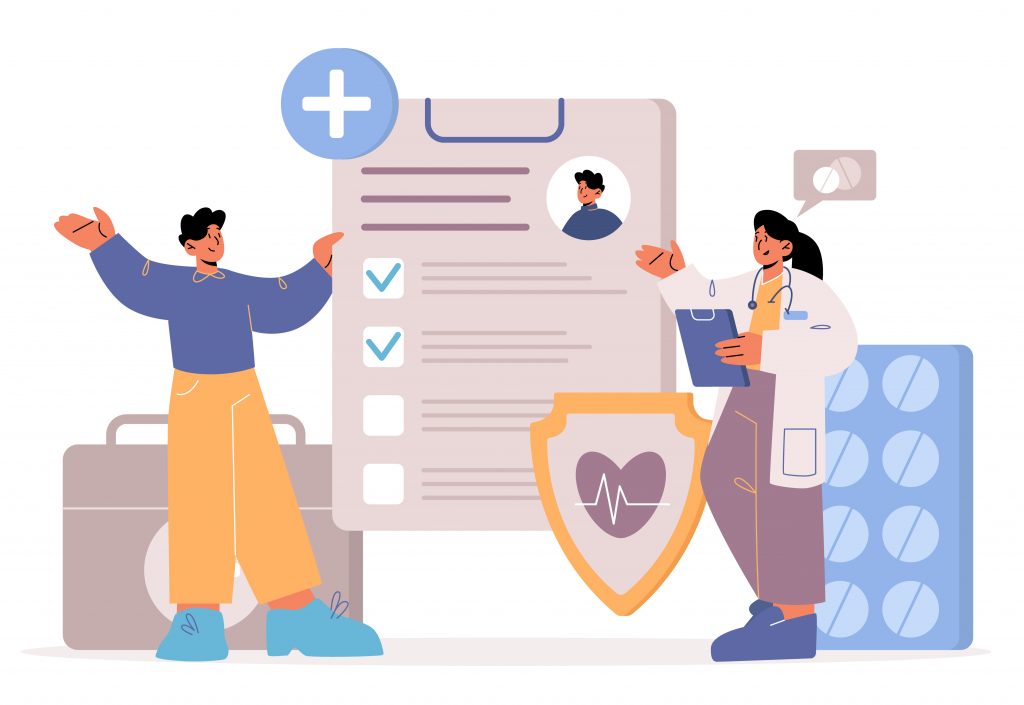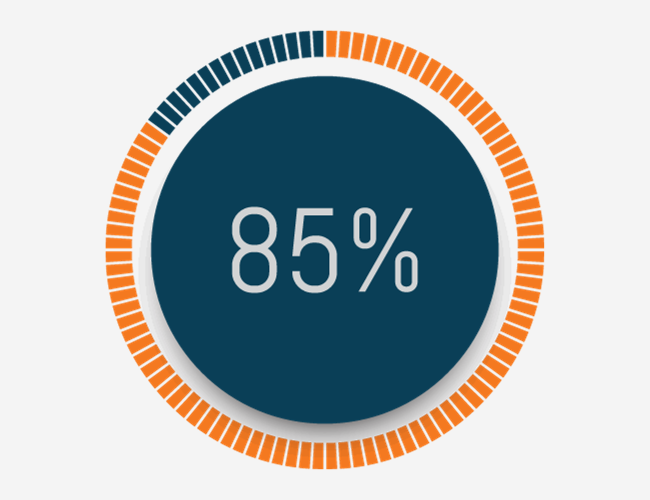Ozempic (semaglutide), once exclusive to diabetes care, has unexpectedly gained fame for its weight loss effects, sparking interest in similar drugs like Wegovy, Mounjaro, and Zepbound. While Ozempic and Mounjaro are intended for diabetes management, Wegovy and Zepbound treat obesity and related conditions like high blood pressure.
The drugs’ popularity has raised ethical questions, ignited medical debates, and brought about financial implications for healthcare. Understanding their implications is essential for employers to make informed decisions and promote lasting employee health.
Pressed for time? Here’s a quick summary…
- The rise of Ozempic: Initially developed for diabetes, Ozempic gained fame for its weight loss benefits, leading to the approval of Wegovy and Zepbound for obesity treatment. Their celebrity-driven fame raises access issues for diabetes patients.
- Benefits and risks: Semaglutide helps individuals with Type 2 diabetes maintain glycemic control and offers weight loss potential comparable to bariatric surgery, reducing cardiovascular disease risks. However, users with diabetes may experience nausea, excessive thirst, muscle loss (a concern for those aged 65+), and in rare cases, life-threatening intestinal blockage (ileus).
- Health plan strategies: Coverage strategies for Ozempic include selective coverage (limited to individuals with diabetes), stringent prerequisites for eligibility, and comprehensive plans covering both diabetes and weight loss.
- Sustainable solutions: Holistic wellness programs that encompass various aspects of well-being support sustainable weight management and overall employee health.
The Rise Of Ozempic & Wegovy For Weight Loss
What began as a diabetes treatment has transformed into a sensation, capturing the attention of celebrities, tech titans, and TikTok influencers. How did Ozempic become a pop culture phenomenon and a perceived “wonder drug”?
FDA Approval & Spark Of Popularity

Ozempic, developed by Novo Nordisk, received FDA approval for diabetes in 2017. Following the successful results of the STEP (Semaglutide Treatment Effect in People with Obesity) clinical trial program, the FDA approved its higher-dose variant, Wegovy, for obesity treatment. This boosted these drugs’ profiles for weight loss effectiveness.
In parallel, Eli Lilly introduced its GLP-1 (Glucagon-Like Peptide-1) receptor agonists—Mounjaro, approved in 2022 for type 2 diabetes, and Zepbound, approved for weight loss as of November 8, 2023. Both contain tirzepatide, which targets two hormones, potentially increasing their effectiveness for glucose control and weight loss.
#Ozempic: Celebrity Endorsements & A TikTok Sensation
Elon Musk’s public endorsement of Wegovy for his weight loss, along with celebrities like Andy Cohen, amplified the drug’s popularity. Even within private chats, actors and producers have been “quietly singing the drug’s praises.” TikTok is abuzz with the hashtag #Ozempic, collecting over 273 million views, as users share their astonishment at their weight loss results and swap stories about Ozempic’s side effects.
Demand & Consequences
The allure of Ozempic and similar ‘wonder drugs’ have spiked the demand for prescription weight loss medications. Telehealth companies have boosted this by increasing accessibility through online prescriptions. However, the explosive demand for Ozempic and Mounjaro has created shortages for diabetes patients, leaving them scrambling for alternatives.
“We’re getting messages daily about patients not being able to get their own medication. It’s been tough for patients and providers alike.”
Dr. Disha Narang, endocrinologist & Director of Obesity Medicine at
Northwestern Medicine, Lake Forest Hospital
Economic Growth
While the heightened demand for GLP-1s poses accessibility challenges, studies suggest that their widespread use could significantly boost the US economy. For instance, with 30 million users of weight-loss drugs, the GDP could increase by 0.4%, potentially reaching 1% with 60 million users. This potential for economic improvement is especially relevant given the obesity challenge in the US.
Potential Benefits & Risks Of Ozempic & Sister Drugs
Ozempic, Wegovy, Mounjaro, and Zepbound, despite their endorsements and social media buzz, come with both benefits and risks. Individuals and healthcare providers must carefully consider these drugs’ implications for informed decision-making.
Potential Benefits
- Blood sugar regulation: Semaglutide helps lower blood sugar and regulate insulin, critical for Type 2 diabetes management.
- Effective weight loss: Semaglutide mimics a satiety hormone. This prompts the stomach to empty slowly, resulting in body weight reductions of up to 20%, comparable to bariatric surgery. This makes it a powerful drug for those dealing with obesity, who often face various health complications.
- Reduced risk of cardiovascular disease: Weight loss achieved with these medications can reduce the risks of heart attack, stroke, and other cardiovascular diseases.
Potential Risks

- Nausea & discomfort: Some users experience nausea when they first start using Ozempic, causing initial discomfort but usually subsiding overtime.
- Excessive thirst & appetite suppression: Ozempic often increases thirst, a trade-off for its appetite-suppressing effects. While a reduced appetite aligns with the weight loss goals of many users, some people may experience malnourishment if their urge to eat is diminished. Individuals on this medication must receive proper nutrition guidance, and in extreme cases, discontinue its use.
- Long-term muscle loss: Muscle loss can occur while on GLP-1 medications. This particularly impacts those aged 65 and above, as it can be detrimental to strength and mobility and escalate the risk of falls and injuries.
“Losing muscle mass and strength with aging is a natural phenomenon – everyone has a threshold where it causes a problem.”
– John Batsis, expert in geriatric medicine –
- Intestinal blockage (Ileus): In rare cases, Ozempic has been associated with intestinal blockage, known as ileus. This condition causes drastic increases in intestinal length, which can be life-threatening. The FDA has updated the drug’s label to include a warning about this risk.
- Compounded medications risk: The American Diabetes Association (ADA) warns against using compounded GLP-1 RA and dual GIP/GLP-1 RA medications due to concerns about dosing errors, safety, and effectiveness. The ADA recommends using only FDA-approved drugs for managing type 2 diabetes, weight, and related conditions.
Health Insurance Plans’ Responses

The annual cost of obesity-related illnesses is roughly $210 billion and rising. With more than 40% of Americans classified as obese—a figure projected to reach nearly 50% by 2030—the demand for effective treatments like GLP-1 drugs is growing.
However, these drugs are costly, and their long-term use is necessary to maintain weight loss, posing challenges for sustainable healthcare financing.
Furthermore, health insurance plans face the dilemma of integrating drugs that were initially designed for diabetes into weight management coverages. Some have historically hesitated to cover Wegovy, referring to it as a “vanity drug.” Potential coverage strategies include:
- Selective coverage: Insurers distinguish between diabetes management and weight loss needs, ensuring appropriate patient access while managing the demand for their weight loss use.
- Stringent coverage: Insurers may require patients to meet specific conditions or try cheaper alternatives before gaining access to GLPs, controlling utilization and expenses.
- Comprehensive guidelines: Some might develop guidelines addressing the requirements of both diabetes management and weight loss, recognizing the potential for broader health benefits linked to weight loss. This may lead to long-term cost savings.
AMA’s Call for Inclusive Coverage
In recent developments, the American Medical Association (AMA) has officially recommended that health insurers cover FDA-approved weight loss medications, including GLP-1 agonists like Wegovy and Ozempic. This highlights a significant coverage issue: while federal regulations currently prevent Medicare from covering these medications for weight loss, employer health plans have adopted varying stances. Approximately 75% of employer plans cover these drugs for diabetes treatment, but only 25% extend this coverage for weight loss, underscoring a gap in patient access to these treatments.
Insurance policies will continue to adapt to the evolving use of GLP drugs and ongoing data on their benefits and cost-effectiveness.
Solutions For Sustainable Obesity Management

The alarming US obesity rates pose a dual challenge for employers, impacting not only employee well-being but also business performance. Studies indicate that obese individuals are less likely to be employed and, when they are, tend to be less productive.
However, addressing this issue with GLP-1 medications introduces new financial considerations. While drugs like Ozempic offer a solution to manage weight and related health issues, they also add a significant expense for employers. For some, Ozempic has become their highest-cost drug—one organization of 5,000 employees reported over $100,000 in Ozempic expenses in one month.
Therefore, employers are at a crossroads: they’re determined to enhance employee health and productivity, but they must also manage growing healthcare costs. How can organizations deliver effective care while maintaining cost control?
Connecticut’s Innovative Approach
Connecticut’s state employee health plan, covering 265,000 employees, faced rising costs due to the popularity of weight loss medications like Ozempic and Wegovy. Instead of eliminating coverage, plan members seeking these drugs must now participate in a clinical lifestyle management program called Flyte before prescriptions are considered. Flyte offers online tools for weight management, personalized care plans, and may lead to drug prescriptions, which are covered by the plan. Organizations may adopt a similar approach to manage costly yet effective treatments.
Strategies For Employers
It’s critical to recognize that weight management isn’t a one-and-done intervention. It requires a comprehensive set of ongoing initiatives that contribute to a healthy lifestyle.

- Holistic wellness programs: Wellness programs, like Wellable’s integrate physical activity, nutrition, sleep, stress management, and more to enhance overall well-being and support sustainable weight reduction. It’s crucial that these programs integrate physical activities like strength training and resistance exercises to preserve muscle mass, which plays a key role in health and longevity.
- Drug eligibility: Employers may consider tying eligibility for Ozempic and similar drugs to participation in wellness programs, similar to Connecticut’s Flyte program. While the intention is to encourage positive lifestyle changes, it’s equally important to uphold ethical standards by prioritizing patient autonomy and equitable access. Exemptions should be available for those who can’t participate due to work schedules, family responsibilities, or health reasons. Providing diverse program options that suit different needs ensures inclusivity.
“This is not meant to be a medication to take off your last five or 10 pounds to get ready for an event or something like that…When we think about weight management, we’re thinking about the next 25 years of someone’s life.”
– Dr. Disha Narang, endocrinologist & Director of Obesity Medicine at Northwestern Medicine,
Lake Forest Hospital
3. Health coaching: Health coaching can supplement wellness programs or act as a stand-alone initiative, providing personalized guidance and support for achieving lasting weight loss. This can complement the use of medication while aligning with the broader goal of improving employee health and managing healthcare costs.
This article was last updated on December 6, 2024












